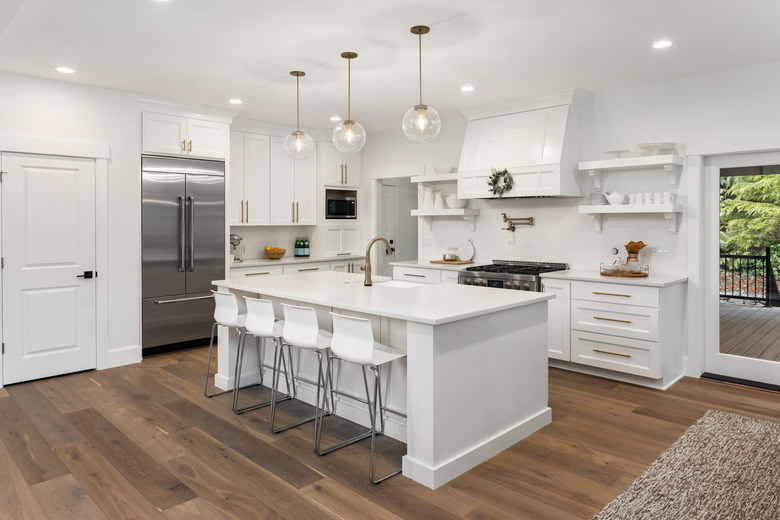When To Use Daylight Or Sunlight Fluorescent Light Bulbs
Picking out a light bulb can be a more overwhelming task than it seems. You might think you simply need to know the size of the bulb, but when you hit that aisle, there are all kinds of choices to make about the color temperature that the bulb will give off in your home. Although there's no one-size-fits-all answer to finding the perfect light bulb, learning more about daylight and sunlight fluorescent bulbs will help you determine the best times to use each one.
Light Bulb Color Temperatures
Light Bulb Color Temperatures
A light bulb's color temperature refers to the way a bulb looks and feels. The temperature is measured on a scale of Kelvin degrees of 1,000 to 10,000. Typically, the higher the number, the more white a bulb appears.
Warmer temperatures tend to be anywhere from 2000 to 3000K. They're often referred to as soft white bulbs, and produce the kind of intimate lighting that you might find at a cozy restaurant. These bulbs pull light from the warm colors in the room, which is why this lighting sometimes appear more yellow than white.
Anywhere from 3100 to 4500K are the cool white bulbs. They are bright, and often appear to be a true white. They're common everywhere from workplaces to rooms of the house that need good lighting, such as kitchens and bathrooms.
Read More: Daylight vs. Soft White Light Bulbs
Daylight bulbs are anywhere above 4600K, though there are some distinctions in that category. Bulbs in the 5000 to 5400K range are often labeled as sunshine or sunlight bulbs, while bulbs higher than that often are called daylight bulbs. Both often pull from the blue hues in the room, and give off blushish-white, vibrant feel. Sunlight and daylight bulbs are both designed to mimic the way the sky looks on a clear, sunny day, though the daylight ones may be a bit brighter and bluer, the way a sunny sky would like right at noon.
Best Uses for Sunlight and Daylight Fluorescent Bulbs
Best Uses for Sunlight and Daylight Fluorescent Bulbs
There are many practical ways to use these color temperatures in both commercial and residential spaces.
In the home, they are best in kitchens, bathrooms and home offices. Bright and crisp color temperatures can give the room an energetic feel, and provide the necessary light for tasks like reading, cooking and applying makeup. If these rooms already have a lot of natural light or a lot of blue hues, you may want to stick with bulbs in the sunlight range, to avoid too much brightness. But in rooms like basements or windowless bathrooms, you could opt for daylight, to really up the brightness. You can also get a daylight fluorescent lamp that can be switched on when you need it, such as for reading in an otherwise dim study or applying makeup in your bedroom.
Read More: How Can I Make Fluorescent Lighting Warmer?
Many commercial spaces also use daylight and sunlight bulbs. Office spaces are often lit with natural daylight fluorescent tubes. Lighting is also important in establishments like hair salons, art galleries and jewelry stores, where owners want to create the right ambiance and make sure their products look as good as possible for potential customers. Many prominent art museums feature the SoLux bulb, a brand known for bulbs that give off a natural light.
Using Fluorescent Bulbs for Growing
Using Fluorescent Bulbs for Growing
Another popular use for sunlight and daylight bulbs is for growing plants indoors. Many home gardeners use fluorescent tubes, or compact fluorescent lights (CFLs). The exact color temperature you want will differ based on the type of plant and the natural indoor lighting, but most houseplants flourish with bulbs in the 4000 to 6000K range, typically labeled as sunlight bulbs (or potentially daylight bulbs, but on the lower end of that range).
Those sunlight bulbs do a good job of providing the natural warmth of sunshine rather than the possibly excessive brightness of daylight bulbs. Although they are safe and energy-efficient enough to be kept on for long periods of time, don't forget that plants also need periods without light, as they would get during the night outdoors.
